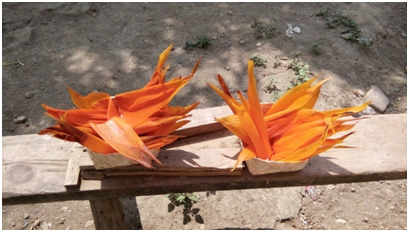Corn is the main commodity of the farmers from Gunung Rambut hamlet in Pitu village, Ngawi regency, East Java. The farmers normally sell the corn harvest in the form of peeled corn or kernels while the peel is given to the cattle as feed or just being dumped or burnt. This made UGM students joining Student Community Service programme in the village to give training on the use of corn waste into handicraft to the farmers.
This was done in the village under the guidance of field supervisor, Atus Syahbudin, S.Hut., M.Agr., Ph.D. The students did some discussion, reference, and trial of making corn peel craft for the women of the village.
One of the students, Laila Hidayati Ikromi, said the making of the craft was started with selecting corn peel. They need to peel it manually because if using machines, the peel will get broken.
“The next step is to colour the peel while boiling the material using textile colouring. Afterwards, the peel is cooled down and dried to get rid of the liquid by 75%,” said the Psychology student.
Laila added the corn needs to be ironed to produce a flat, not wavy surface. Next, they make parts of flowers such as filament and petals, using scissors. The parts are then assembled with wires.
“It needs some skills to make the craft, also caution and patience in order to produce a beautiful flower,” said Laila.
The students further use dried shrubs for the stalks that are easily available in the forest nearby.
Despite the good response, Laila said they have yet to develop this potential because not many women are involved in the training.
“It’s difficult to make time for the women due to their work on the paddyfields. Besides, willingness is yet to be built for the handicraft making,” she said.
She explained the results of the work had actually been displayed in an exhibition in the village on 29 July. Going forward, price needs to be planned in advance as well as market analysis to enhance this programme.
“I hope the program can be sustainable and become a small scale business for the local people of Gunung Rambut that improves their income through the utilisation of natural resources of the village,” Laila concluded.



